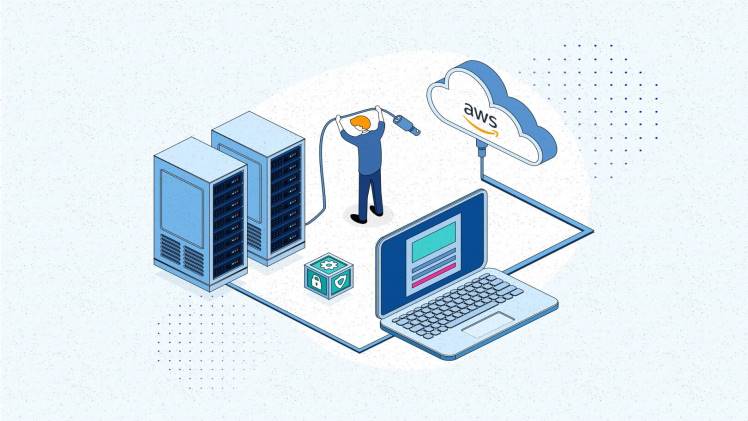The Power of Connectivity: Exploring the Wonders of Computer Networks

In today’s interconnected world, computer networks play an indispensable role in facilitating communication, sharing information, and enabling collaboration on an unprecedented scale. Whether it’s a small local network connecting devices within a home or a vast global network linking continents, computer networks form the backbone of our digital age. In this article, we delve into the fascinating realm of computer networks, exploring their architecture, benefits, and the evolving landscape of network technology.
At their core, computer networks are intricate systems designed to connect computers, servers, and other devices together. These networks are established using a variety of technologies, including wired and wireless connections, and are built upon a foundation of protocols, standards, and communication methodologies.
Velocenetork states that computer networks can be classified into different architectures based on their structure and scale. The most common architectures include:
Local Area Networks (LANs):
-
- LANs are networks confined to a small geographical area, such as a home, office, or school.
- They typically utilize Ethernet cables or Wi-Fi to connect devices and enable resource sharing and communication.
Wide Area Networks (WANs):
-
- WANs cover larger areas, such as cities, countries, or even the entire globe.
- They connect LANs and other networks over long distances, often utilizing routers and switches to direct traffic.
Metropolitan Area Networks (MANs):
-
- MANs bridge the gap between LANs and WANs, covering larger regions like metropolitan cities.
- They provide high-speed connectivity and support large-scale data transfers within a defined geographic area.
Network Components:
To establish a functional network, various components work together harmoniously:
Network Devices:
-
- Routers, switches, modems, and access points form the backbone of a network, managing data flow and connectivity.
- Routers direct data between networks, while switches connect devices within a network.
- Modems facilitate internet access, and access points extend wireless coverage.
Network Protocols:
-
- Protocols, such as TCP/IP (Transmission Control Protocol/Internet Protocol), govern how data is transmitted and received across networks.
- They ensure reliable, error-free communication by breaking data into packets and reassembling them at their destination.
Advantages and Applications of Computer Networks
Computer networks have revolutionized the way we live and work, empowering us with a plethora of advantages and applications.
Enhanced Communication:
- Networks enable seamless communication between individuals, businesses, and organizations across the globe.
- Email, instant messaging, video conferencing, and VoIP (Voice over Internet Protocol) have become staples of modern communication.
Resource Sharing:
- Networks facilitate the sharing of hardware resources, such as printers, scanners, and storage devices.
- They also enable the centralized management of software applications and data, improving efficiency and collaboration.
Internet Access:
- Through network connectivity, individuals and organizations gain access to the vast resources and services offered by the internet.
- Web browsing, online research, e-commerce, and cloud-based applications are made possible by computer networks.
Remote Access and Mobility:
- Networks empower users to access their resources and data from remote locations, promoting flexibility and productivity.
- Mobile devices, such as smartphones and tablets, leverage wireless networks to provide ubiquitous connectivity.
The Evolving Landscape of Network Technology:
Computer networks are continually evolving, driven by technological advancements and growing demands.
Wireless Networks:
- Wireless networks, such as Wi-Fi and cellular networks, have revolutionized connectivity by eliminating the constraints of physical cables.
- The emergence of 5G technology promises even faster speeds, lower latency, and greater capacity, paving the way for innovations like the Internet of Things (IoT) and autonomous vehicles.
Cloud Computing:
- Cloud computing has transformed the way we store, process, and access data.
- Networks play a crucial role in providing reliable and secure connectivity to cloud-based services, enabling organizations to scale their operations and access resources on-demand.
Network Security:
- With the increasing reliance on networks, the importance of robust security measures cannot be overstated.
- Network security technologies, such as firewalls, encryption, and intrusion detection systems, safeguard networks from unauthorized access, data breaches, and cyber threats.
Software-Defined Networking (SDN):
- SDN is an emerging paradigm that separates the network control plane from the underlying hardware, enabling centralized network management and programmability.
- This technology offers flexibility, scalability, and simplified network administration, making it easier to adapt to changing business requirements.
Conclusion:
Computer networks are the lifelines of our modern digital world, connecting individuals, organizations, and devices in ways that were once unimaginable. Through their diverse architectures, components, and protocols, networks enable seamless communication, resource sharing, and access to vast information repositories. As technology continues to advance, networks evolve to meet the growing demands of an increasingly interconnected society. By embracing these advancements and understanding the ever-changing landscape of network technology, we can harness the power of connectivity and unlock new opportunities for innovation, collaboration, and progress.




